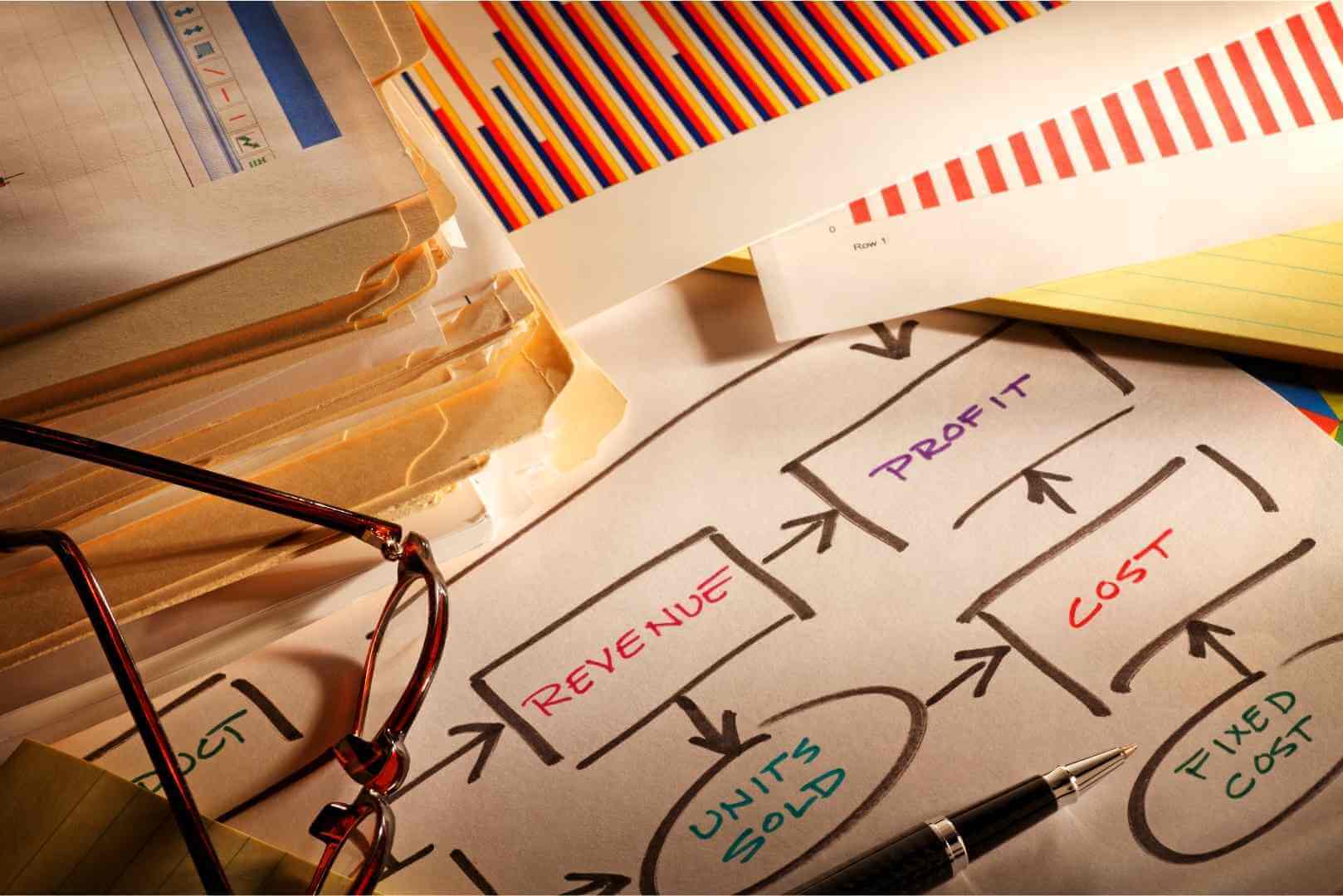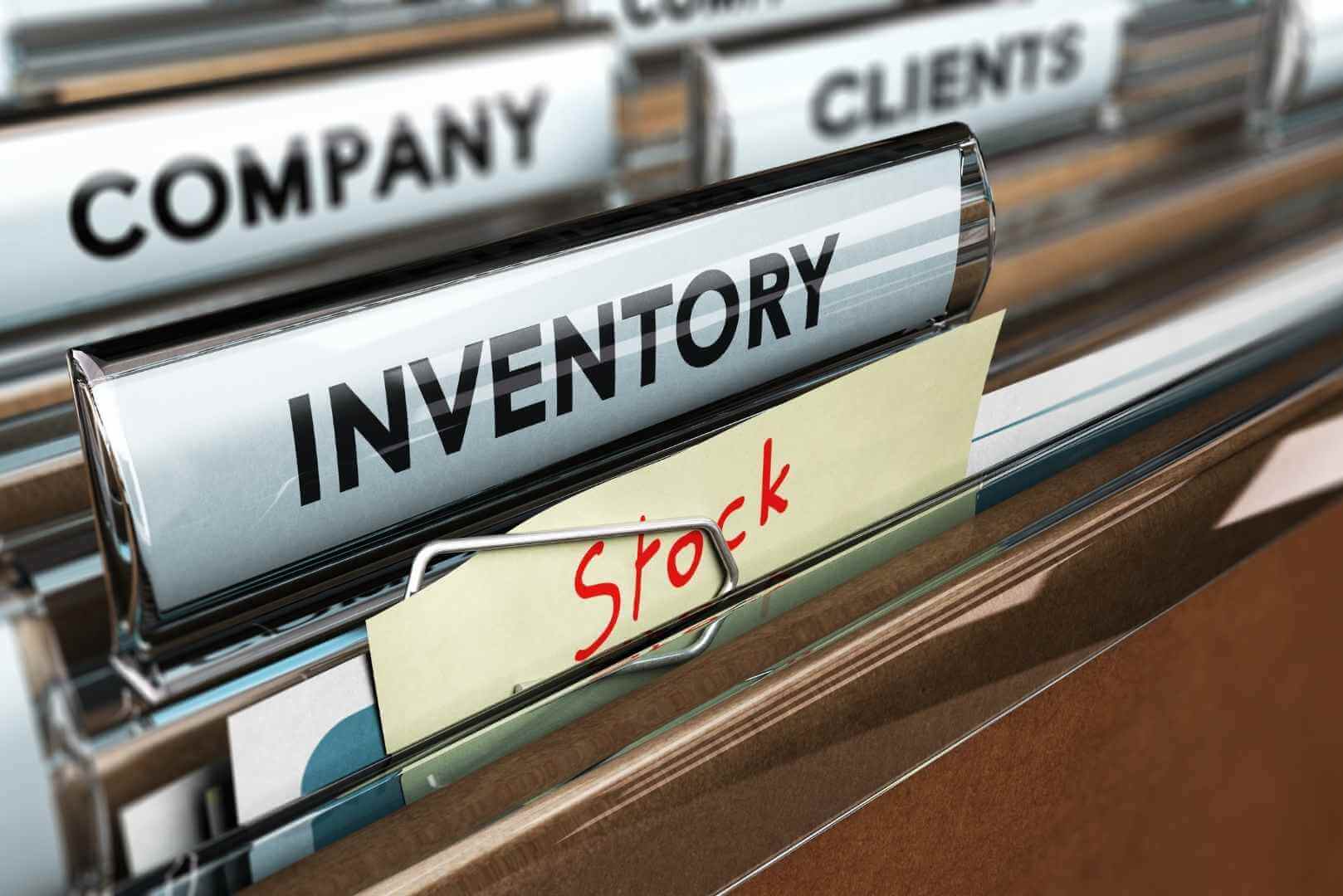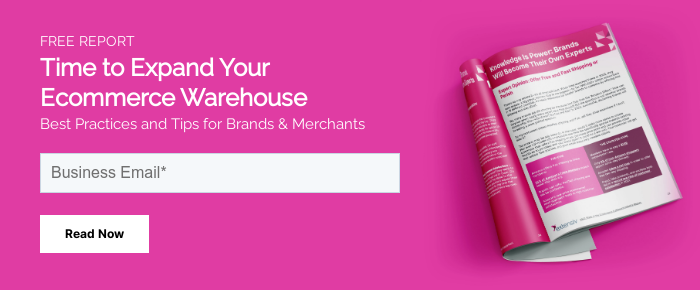What is inventory accounting?
A company’s inventory centers on goods within three stages of the production process: raw materials, work-in-progress items, and finished goods that are ready to be sold. And because all inventory has value, it’s meant to be listed as a current asset on your balance sheet. Inventory accounting, then, looks at any changes made to these inventoried assets. In that way, inventory accounting methods help you determine the value and cost of your inventory items. This becomes vital information as you begin to budget, set prices, and/or work out your taxes.
Why should you account for inventory?
Accurately represent financial health
Achieving clarity around your financial health can help you make better decisions about how your resources are allocated. Fortunately, your inventory balance sheet is a great indicator of your financial standing, as it shines a light on your assets, liabilities, and even your equity. With an accurate, well-defined account of your assets (i.e. your inventory), you can see exactly how you’re spending your time and money to then improve the overall wellbeing of your business.
Track sales cycles
In essence, a sales cycle is a series of events (or phases) that happen as a product is being sold. Tracking these cycles permits business owners to recognize inventory issues early on before they grow into much bigger problems. Using a trusted method for inventory accounting, companies can easily and effectively implement a sales tracking process — thus letting you see how products are doing in real-time to alleviate any potential inefficiencies.
Understand product performance
Product performance analytics are a collection of strategic data points that reveal the number of product page views, the rate of abandoned carts, and the number of times a product makes it to checkout. When your business accounts for these inventory metrics, you’ll have incredible visibility into the larger story around your product catalog. For that reason, product performance knowledge can impact reorder points, safety stock levels, and/or supply chain management.
Find growth opportunities
Inventory accounting is essential to balancing the supply and demand of whichever goods your company sells. Not only that, but it allows you to know the quantity and types of inventory available, which means assigning an accurate value to said items. And because accounting evaluates the cost of goods sold and unsold at the end of every financial term, it provides great insight into where there’s room for growth with both productivity and profitability.
Choosing your cost flow method for inventory accounting

FIFO
A FIFO (First-in, First-out) approach is where the first items to be acquired are also sold, used, or disposed of first — which is why this is the preferred way to keep inventory levels fresh. This also helps explain why the FIFO method is commonly used to track food, medicine, and other perishable items. With regards to taxable income, the FIFO inventory method assumes assets with the oldest costs are included in the income statement’s cost of goods sold. The remaining assets, then, are matched with the goods that have been most recently purchased or produced.
LIFO
LIFO (Last-in, First-out) accepts that the last unit to arrive (i.e. new inventory) has priority over anything else. With the LIFO accounting method, companies take the items received last and sell or ship those first. While LIFO inventory can prevent perishable items from going bad, unfortunately, it’s not a good indicator of ending inventory valuation. Typically, businesses will only incorporate the LIFO method if the prices of their inventory are subject to increase; by moving them over to COGS, companies can report lower profit levels to secure lower taxes. Those tax implications are a reason why LIFO methods are not permitted as an accounting method in may regions, countries, and industries.
Weighted average
Weighted average is used to assign the average cost of production to a given product. This method is commonly utilized when inventory items are so intertwined you’re unable to assign a specific cost to an individual unit (like with products that are identical to one another). If you divide the total cost of goods by your total number of units, you’ll arrive at the weighted average cost for each unit. With this figure or calculation in tow, you can then assign a cost to your ending inventory in addition to the COGS for that designated time period.
Specific identification
The specific identification valuation method individually tracks every item from the time it enters your inventory until it’s officially sold and shipped out. Specific identification works by tracking each product via its RFID tag, serial number, or stamped receipt date (from when it was added to when it exited your inventory). In other words, all your products are tagged with the purchase cost and any supplementary inventory costs that are incurred prior to being sold. Companies who rely on this approach usually have high-value, large, or easily identifiable SKUs.
Regardless of which cost flow method your company selects, the ticket to quality accounting is sticking with the same method to ensure consistency throughout your financial statements.

3 key concepts of inventory accounting

Cost of goods sold (COGS)
Cost of goods sold is a term for the direct costs of producing the goods sold by a brand or business. The COGS amount includes expenses directly related to production (like raw materials and cost of labor), but it excludes indirect expenses (like overhead and marketing). A company’s cost of goods sold is deducted from its revenue in order to calculate gross profit and gross profit margin; in general, a higher COGS is associated with lower profit margins.
Ending inventory (EI)
Ending inventory is the value of goods still available for resale at the end of an accounting period. While the physical number of units in ending inventory will be the same under any cost flow method, the dollar value of ending inventory is directly affected by your chosen inventory valuation strategy. The reason for this, is that the method used to assign a dollar value to inventory and COGS impacts values on both your income statement and balance sheet.
Income statements
Income statements are those accounts within the general ledger that are used to inform your profit and loss statement. This type of account is usually positioned in the ledger after the accounts used to compile the balance sheet. A large corporation might have hundreds (or sometimes thousands) of income statement accounts to help track the revenues and expenses associated with its various product lines, departments, or divisions of the company.
7 inventory accounting mistakes to avoid

Using the wrong methodology
Most people who run an ecommerce business start on a cash basis — transaction in, transaction out. However, as your company grows, you’ll need to leverage the accrual model to support purchasing and invoicing. Essentially, accrual accounting is when revenue and expenses are recorded as they occur, whereas cash accounting means nothing is documented until the money has exchanged hands. This explains why your methodology boils down to how transactions are recorded in your accounting software (and not how your business operates).
Losing track of cashflow
Every product-based business likely understands the ways in which cashflow presents a challenge, from not having enough cash on hand, to not knowing when to strategically spend it. And when you’re running hundreds of SKUs at once, the process of accounting for your inventory and tracking your cashflow becomes even more important. Accounting on an accrual basis is the best way to determine the true performance of your business, and to avoid losing sight of where your money is going during each fiscal period.
Lost in-transit stock
There are multiple times in transit that inventory can get ‘lost,’ like when goods transition from your 3PL to Amazon. Your 3PL will more than likely remove the items from their inventory once they’re sent to Amazon, and yet, Amazon won’t account for those items until they’re received. Depending on the season and the size of your inventory, that can be hundreds of thousands of dollars of inventory in transit that isn’t showing on the books. But whether it’s on the water, in a warehouse, or in transit, inventory always needs to appear somewhere on the balance sheet.
Confusing 3PL fee structures
A 3PL generally has two ways of billing: (1) they will bill you for storage in the month it’s used, and (2) when the month is over, they’ll send you a second bill for the shipping and/or pick and pack fees associated with orders that went out the door. The amount billed in a future month is actually an accrual-based item that should be reported on the prior month’s books (to ensure it matches up with the sales that left your warehouse). Unfortunately, a lot of people miss that 3PL invoice, causing issues down the line with the accuracy of their accounting.
Forgetting channel fees
Operating costs vary by channel, making it super important to pay attention to the fee structure of each channel, warehouse, and vendor. By mistakenly booking net revenue, you won’t have a true picture of what your margin profile looks like, so it’ll throw off all the other numbers you’re generating. Instead, when you receive reports from Amazon, you’ll need to book your gross revenue and your net fees (returns, refunds, etc), netting all the way down to the cash received. What’s more, you’ll need to know the period of time that money was being used, too.
Include sales tax
Not filing sales taxes — or not doing your taxes appropriately on a state level — is a huge risk for modern ecommerce companies. Since the rules around sales tax changed back in 2018, you can now be required to pay tax on the sales you do in a state even if you no longer have nexus there. With that in mind, it's recommended you have an audit by a state professional to guarantee you’ve met all the nuances of those tax responsibilities. In doing so, you can make sure you don’t have any outstanding payments that’ll cause larger issues later on.
Guessing your inventory value
Without knowing your true inventory value, you won’t have flexibility over your pricing, overhead, marketing, or any of your growth. Playing guessing games with the value of inventory is a great way to waste time and money, which is why your company should close its books on a regular basis. If you’re making $1 million per year, it’s best to do a hard close on your books every month (or no less than every quarter). From there, you can pause, review the information, and work with an accountant who can help you understand what these reports really mean.
How Extensiv (formerly Skubana) helps with inventory accounting
Accurate SKU profitability reports
Multichannel inventory gets increasingly complicated as a business scales, but thankfully, things can quickly be simplified if you consolidate your data into accurate reporting; a reliable data source for inventory across all channels will serve to streamline the entire inventory accounting process. Skubana’s SKU Profitability Report delivers relevant information on the exact margins per product to be sure every item in your product catalog performs its best. This report provides detailed intelligence around SKU performance from velocity to profitability so you can take your business to the next level (while still avoiding growing pains and unnecessary costs).
Find growth opportunities
There’s no denying that the best data is your own data. That’s why growth should be driven by insights found through analyzing internal trends, be it supply chain, product performance, sales channels, or fulfillment metrics. Skubana (now Extensiv) has a forecasting tool that allows businesses to make decisions based on these existing trends, and directly supports growth by helping you optimize the inventory process. Moreover, Skubana’s reporting abilities make it a true partner for ecommerce companies, since its inventory data can be used to identify where to devote your energy and drive significant growth opportunities for your small business or established brand.
Automate for efficiency
Simply put, automation is the key to efficient resource allocation. By leveraging automated processes to complete repetitive tasks (and crunch numbers at scale), your brand will be empowered to focus on big-picture insights and make changes that deliver lasting impact. On top of that, the automations from Extensiv generate data in real-time, establish baselines, and support much faster decision-making. By implementing Skubana’s innovative inventory system, retailers can save countless hours on manual calculations, so that experts can instead concentrate on analysis and action plans that’ll spur on profitability and growth.
Are you curious how Extensiv can automate inefficiencies and uncover growth potential for your own ecommerce business? Schedule a demo today to see how our platform works and to experience the Extensiv difference for yourself.







